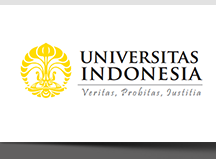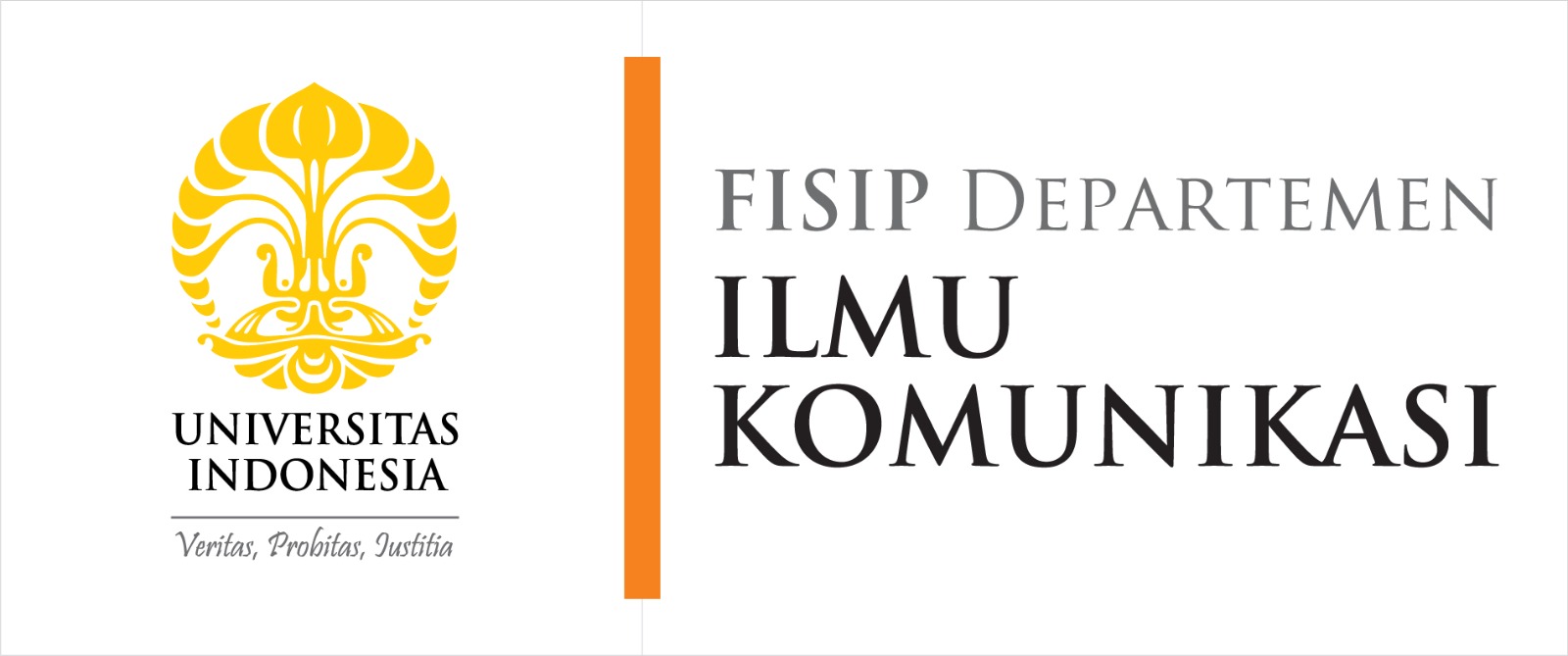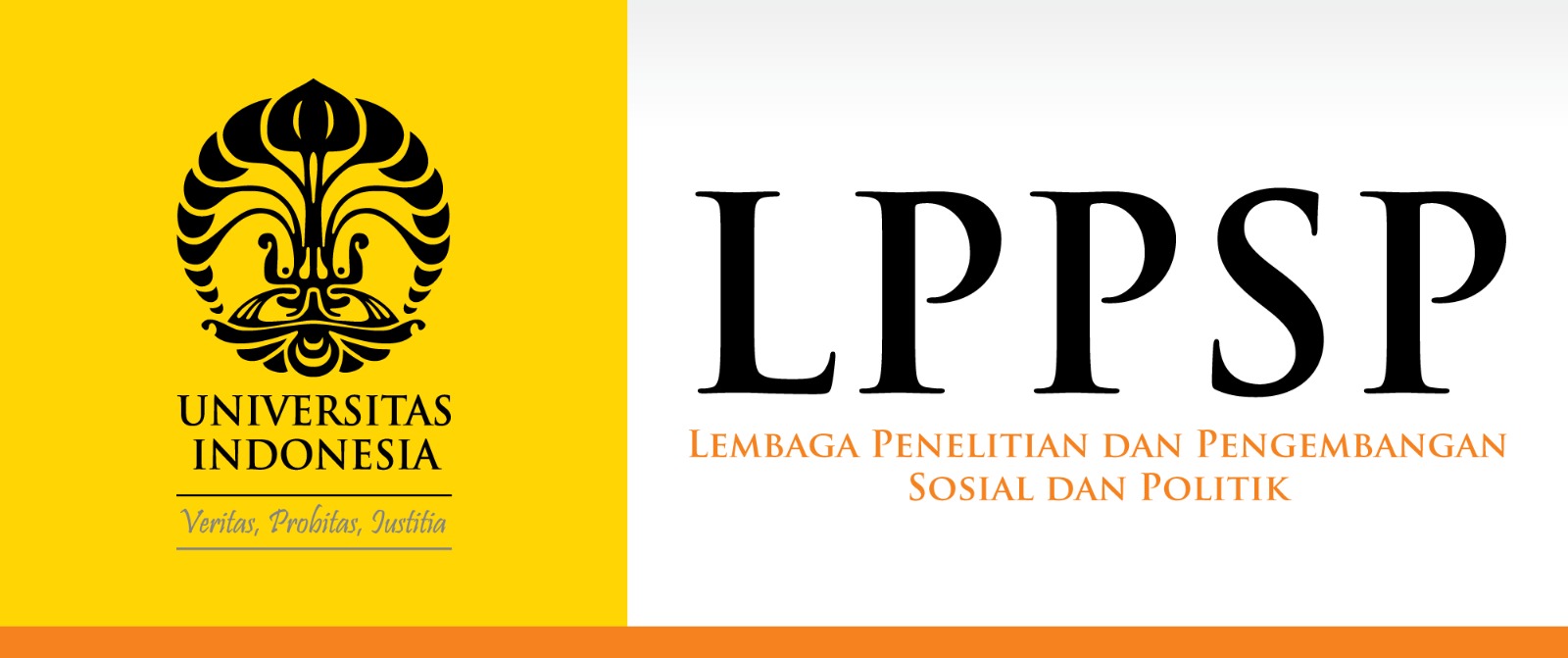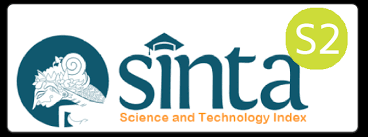JURNAL KOMUNIKASI INDONESIA
Abstract
The advancement of technology has given rise to the phenomenon of user-generated content (UGC), which presents an intriguing subject for investigation through various perspectives. This paper aims to conduct an analysis of journal articles focusing on UGC within the context of the Instagram social media platform. To achieve this, the paper employs a systematic literature review (SLR) research method, adhering to the PRISMA protocol, focusing specifically on journal articles discussing UGC on Instagram. The literature search was conducted in April 2023 using the keywords "UGC" and "Instagram" in the Scopus database. After a series of exclusions, the research examined 30 journal articles relevant to the topic. Eight research questions were addressed based on the conceptual framework, document characteristics, and content dimensions. The analysis results reveal that UGC offers numerous advantages to the communication and marketing industry. These benefits can be realized through the application of specific strategies tailored to the characteristics of Instagram users.
Bahasa Abstract
Perkembangan teknologi memicu munculnya konten yang dihasilkan oleh pengguna atau user-generated content (UGC). Fenomena ini menarik untuk dipelajari dari berbagai pendekatan. Tulisan ini bertujuan menganalisis artikel jurnal yang membahas mengenai UGC pada media sosial Instagram. Oleh karena itu, tulisan ini menggunakan metode studi tinjauan sistematis atau systematic literature review (SLR) dengan mengikuti protokol PRISMA terhadap artikel jurnal yang membahas UGC pada media sosial Instagram. Pencarian literatur dilakukan pada April 2023 dengan memasukkan kata kunci "UGC" dan Instagram pada database Scopus. Setelah melalui sejumlah proses eksklusi, kajian ini menganalisis 30 artikel jurnal yang sesuai dengan topik bahasan. Studi ini menjawab delapan pertanyaan penelitian yang dibuat berdasarkan kerangka kerja konseptual, karakteristik dokumen, dan dimensi konten. Hasil analisis menunjukkan UGC memberikan sejumlah manfaat untuk industri komunikasi dan pemasaran. Manfaat ini bisa didapatkan dengan menerapkan strategi tertentu sesuai dengan karakteristik pengguna Instagram.
References
Acuti, D., Mazzoli, V., Donvito, R., & Chan, P. (2018). An instagram content analysis for city branding in London and Florence. Journal of Global Fashion Marketing, 9(3), 185–204. https://doi.org/10.1080/20932685.2018.1463859
Adamış, E., & Pınarbaşı, F. (2022). Unfolding visual characteristics of social media communication: reflections of smart tourism destinations. Journal of Hospitality and Tourism Technology, 13(1), 34–61. https://doi.org/10.1108/JHTT-09-2020-0246
Alasuutari, P., Brannen, J., & Bickman, L. (2008). The SAGE Handbook of Social Research Methods. Sage. http://digital.casalini.it/9781446206577
Ardianto, E. (2011). Komunikasi 2.0 Teoritis dan Implikasi. ASPIKOM Buku Litera dan Perhumas.
Balbi, G., & Magaudda, P. (2018). A History of Digital Media: An Intermedia and Global Perspective. Routledge.
Bernardi, C. L., & Alhamdan, N. (2022). Social media analytics for nonprofit marketing: #Downsyndrome on Twitter and Instagram. Journal of Philanthropy and Marketing, 27(4). https://doi.org/10.1002/nvsm.1739
Bolin, G. (2021). User-Generated Content (UGC). In Digital Roots (pp. 267–280). De Gruyter. https://doi.org/10.1515/9783110740202-015
Bruns, A. (2016). User‐Generated Content. In The International Encyclopedia of Communication Theory and Philosophy (pp. 1–5). Wiley. https://doi.org/10.1002/9781118766804.wbiect085
Chaffey, D., & Ellis-Chadwick, F. (2019). Digital Marketing. Pearson.
Chaffey, D., & Smith, P. R. (2022). Digital Marketing Excellence: Planning, Optimizing and Integrating Oline Marketing. Routledge.
Chen, Y. (2021). Public Perception of Tourism Cities before and during the COVID-19 Pandemic through the Lens of User-Generated Content. Sustainability, 13(24), 14046. https://doi.org/10.3390/su132414046
Chia, A. (2012). Welcome to Me-Mart. American Behavioral Scientist, 56(4), 421–438. https://doi.org/10.1177/0002764211429359
Cohen, S., Liu, H., Hanna, P., Hopkins, D., Higham, J., & Gössling, S. (2022). The Rich Kids of Instagram: Luxury Travel, Transport Modes, and Desire. Journal of Travel Research, 61(7), 1479–1494. https://doi.org/10.1177/00472875211037748
Conti, E., & Lexhagen, M. (2020). Instagramming nature-based tourism experiences: a netnographic study of online photography and value creation. Tourism Management Perspectives, 34, 100650. https://doi.org/10.1016/j.tmp.2020.100650
Daugherty, T., Eastin, M. S., & Bright, L. (2008). Exploring Consumer Motivations for Creating User-Generated Content. Journal of Interactive Advertising, 8(2), 16–25. https://doi.org/10.1080/15252019.2008.10722139
Davcik, N. S., Langaro, D., Jevons, C., & Nascimento, R. (2022). Non-sponsored brand-related user-generated content: effects and mechanisms of consumer engagement. Journal of Product & Brand Management, 31(1), 163–174. https://doi.org/10.1108/JPBM-06-2020-2971
Deng, N., & Liu, J. (2021). Where did you take those photos? Tourists’ preference clustering based on facial and background recognition. Journal of Destination Marketing & Management, 21, 100632. https://doi.org/10.1016/j.jdmm.2021.100632
Dewi, H. L. C., & Yuliati, R. (2018). Creating and Utilizing UGC Through Social Media in Trip Planning. Jurnal Komunikasi Ikatan Sarjana Komunikasi Indonesia, 3(1), 45–50.
Geurin, A. N., & Burch, L. M. (2017). User-generated branding via social media: An examination of six running brands. Sport Management Review, 20(3), 273–284. https://doi.org/10.1016/j.smr.2016.09.001
Hammond, A. (2023, October 10). New research: 87% of Ecommerce Brands Prefer Using Images from Real Customers over Handpicked Models or Influencers for Showcasing Diversity. Nosto.Com. https://www.nosto.com/blog/new-research-brands-prefer-ugc-for-diversity/
Hasan Alwan, W., Fazl-Ersi, E., & Vahedian, A. (2020). Identifying Influential Users on Instagram Through Visual Content Analysis. IEEE Access, 8, 169594–169603. https://doi.org/10.1109/ACCESS.2020.3020560
ICE. (2025). Indonesia Creator Marketing Report 2025. https://lnkd.in/geYmfCie
Jalali, N. Y., & Papatla, P. (2016). The palette that stands out: Color compositions of online curated visual UGC that attracts higher consumer interaction. Quantitative Marketing and Economics, 14(4), 353–384. https://doi.org/10.1007/s11129-016-9178-1
Jin, S. V., & Ryu, E. (2020). “I’ll buy what she’s #wearing”: The roles of envy toward and parasocial interaction with influencers in Instagram celebrity-based brand endorsement and social commerce. Journal of Retailing and Consumer Services, 55, 102121. https://doi.org/10.1016/j.jretconser.2020.102121
Kaplan, A. M., & Haenlein, M. (2010). Users of the world, unite! The challenges and opportunities of Social Media. Business Horizons, 53(1), 59–68. https://doi.org/10.1016/j.bushor.2009.09.003
Kapoor, K. K., Tamilmani, K., Rana, N. P., Patil, P., Dwivedi, Y. K., & Nerur, S. (2018). Advances in Social Media Research: Past, Present and Future. Information Systems Frontiers, 20(3), 531–558. https://doi.org/10.1007/s10796-017-9810-y
Kemp, S. (2024, February 21). Digital 2024: Global Overview Report. Datareportal.Com. https://datareportal.com/reports/digital-2024-global-overview-report
Kent, J. D., & Capello, H. T. (2013). Spatial patterns and demographic indicators of effective social media content during theHorsethief Canyon fire of 2012. Cartography and Geographic Information Science, 40(2), 78–89. https://doi.org/10.1080/15230406.2013.776727
Kitchenham, B., & Charters, S. (2007). Guidelines for performing Systematic Literature Reviews in Software Engineering. 2.
Ko, E. (Emily), Kim, D., & Kim, G. (2022). Influence of emojis on user engagement in brand-related user generated content. Computers in Human Behavior, 136, 107387. https://doi.org/10.1016/j.chb.2022.107387
Lasmi, H., Lee, C. H., & Ceran, Y. (2021). Popularity Brings Better Sales or Vice Versa: Evidence from Instagram and OpenTable. Global Business Review, 097215092110443. https://doi.org/10.1177/09721509211044302
Manikonda, L., Hu, Y., & Kambhampati, S. (2014). Analyzing User Activities, Demographics, Social Network Structure and User-Generated Content on Instagram. ArXiv, abs/1410.8099. https://api.semanticscholar.org/CorpusID:15174262
Marine-Roig, E., Martin-Fuentes, E., & Daries-Ramon, N. (2017). User-Generated Social Media Events in Tourism. Sustainability, 9(12), 2250. https://doi.org/10.3390/su9122250
Martensen, A., Brockenhuus-Schack, S., & Zahid, A. L. (2018). How citizen influencers persuade their followers. Journal of Fashion Marketing and Management: An International Journal, 22(3), 335–353. https://doi.org/10.1108/JFMM-09-2017-0095
Mayfield, A. (2008). What Is Social Media. iCrossing.
Merskin, D. L. (2019). The SAGE International Encyclopedia of Mass Media And Society. . SAGE Publications.
Nanne, A. J., Antheunis, M. L., Van Der Lee, C. G., Postma, E. O., Wubben, S., & Van Noort, G. (2020). The Use of Computer Vision to Analyze Brand-Related User Generated Image Content. Journal of Interactive Marketing, 50(1), 156–167. https://doi.org/10.1016/j.intmar.2019.09.003
Nguyen, V. H., Sukunesan, S., & Huynh, M. (2022). Web scraping Instagram Pre and During Covid-19: Examining customer engagement on Australian SMEs accounts. Australasian Journal of Information Systems, 26. https://doi.org/10.3127/ajis.v26i0.3447
O’Hern, M. S., & Kahle, L. R. (2013). The Empowered Customer: User-Generated Content and the Future of Marketing. Global Economics and Management Review, 18(1), 22–30. https://doi.org/10.1016/S2340-1540(13)70004-5
O’Reilly, T. (2006). What Is Web 2.0 Design Patterns and Business Models for the Next Generation of Software. https://api.semanticscholar.org/CorpusID:53624467
Page, M. J., McKenzie, J. E., Bossuyt, P. M., Boutron, I., Hoffmann, T. C., Mulrow, C. D., Shamseer, L., Tetzlaff, J. M., Akl, E. A., Brennan, S. E., Chou, R., Glanville, J., Grimshaw, J. M., Hróbjartsson, A., Lalu, M. M., Li, T., Loder, E. W., Mayo-Wilson, E., McDonald, S., … Moher, D. (2021). The PRISMA 2020 statement: An updated guideline for reporting systematic reviews. International Journal of Surgery, 88, 105906. https://doi.org/10.1016/j.ijsu.2021.105906
Pangaribuan, O. C., & Irwansyah, I. (2019). Media Cetak Indonesia di Era Revolusi Industri 4.0. Jurnal Pewarta Indonesia, 1(2), 134–145. https://doi.org/10.25008/jpi.v1i2.11
Paül i Agustí, D. (2021). Mapping gender in tourist behaviour based on instagram. Journal of Outdoor Recreation and Tourism, 35, 100381. https://doi.org/10.1016/j.jort.2021.100381
Phua, J., Jin, S. V., & Kim, J. (Jay). (2020). Pro-veganism on Instagram. Online Information Review, 44(3), 685–704. https://doi.org/10.1108/OIR-06-2019-0213
Riyanto, A. D. (2022, February 19). Hootsuite (We are Social): Indonesian Digital Report 2022. Andi.Link. https://andi.link/hootsuite-we-are-social-indonesian-digital-report-2022/#google_vignette
Sankovich, N., & Tobin, J. (2024, May 23). User-Generated Content on Instagram [The Ultimate Guide]. Billo.App. https://billo.app/instagram-user-generated-content/#:~:text=Instagram%20boasts%20one%20of%20the,about%20your%20brand%20or%20products.
Santos, M. L. B. dos. (2022). The “so-called” UGC: an updated definition of user-generated content in the age of social media. Online Information Review, 46(1), 95–113. https://doi.org/10.1108/OIR-06-2020-0258
Shao, G. (2009). Understanding the appeal of user‐generated media: a uses and gratification perspective. Internet Research, 19(1), 7–25. https://doi.org/10.1108/10662240910927795
Simatzkin-Ohana, L., & Frosh, P. (2022). From user-generated content to a user-generated aesthetic: Instagram, corporate vernacularization, and the intimate life of brands. Media, Culture & Society, 44(7), 1235–1254. https://doi.org/10.1177/01634437221084107
Sura, S. B., Nistah, N. M., Lee, S., & Alebaba, D. B. (2021). Using Eye Tracking Approach in Analyzing Social Network Site Area of Interest for Consumers’ Decision Making in Social Commerce. International Journal of Advanced Computer Science and Applications, 12(10). https://doi.org/10.14569/IJACSA.2021.0121076
Thompson, K., DeWolf, D., MacDonald-Spracklin, R., Frank, D., & Cooper, S. (2023). #Cheers: An Examination of User-Generated Alcohol Advertising on Instagram. Substance Use & Misuse, 58(2), 204–210. https://doi.org/10.1080/10826084.2022.2151826
Tous, R., Gomez, M., Poveda, J., Cruz, L., Wust, O., Makni, M., & Ayguadé, E. (2018). Automated curation of brand-related social media images with deep learning. Multimedia Tools and Applications, 77(20), 27123–27142. https://doi.org/10.1007/s11042-018-5910-z
Tu, Z., Wang, Y., Birkbeck, N., Adsumilli, B., & Bovik, A. C. (2021). UGC-VQA: Benchmarking Blind Video Quality Assessment for User Generated Content. IEEE Transactions on Image Processing, 30, 4449–4464. https://doi.org/10.1109/TIP.2021.3072221
Van Dijk, J. A. G. (2020). The Network Society. Sage Publications.
Wang, X., Zhao, Y.-L., Nie, L., Gao, Y., Nie, W., Zha, Z.-J., & Chua, T.-S. (2015). Semantic-Based Location Recommendation With Multimodal Venue Semantics. IEEE Transactions on Multimedia, 17(3), 409–419. https://doi.org/10.1109/TMM.2014.2385473
Yu, C.-E., & Sun, R. (2019). The role of Instagram in the UNESCO’s creative city of gastronomy: A case study of Macau. Tourism Management, 75, 257–268. https://doi.org/10.1016/j.tourman.2019.05.011
Yu, J., & Ko, E. (2021). UGC attributes and effects: implication for luxury brand advertising. International Journal of Advertising, 40(6), 945–967. https://doi.org/10.1080/02650487.2021.1898773
Zawacki-Richter, O., Kerres, M., Bedenlier, S., Bond, M., & Buntins, K. (2020). Systematic Reviews in Educational Research (O. Zawacki-Richter, M. Kerres, S. Bedenlier, M. Bond, & K. Buntins, Eds.). Springer Fachmedien Wiesbaden. https://doi.org/10.1007/978-3-658-27602-7
Zeng, M. A., Dennstedt, B., & Koller, H. (2016). Democratizing Journalism – How User‐Generated Content and User Communities Affect Publishers’ Business Models. Creativity and Innovation Management, 25(4), 536–551. https://doi.org/10.1111/caim.12199
Zhang, Y., Pappa, C. I., & Pittich, D. (2024). Exploring user-generated content motivations: A systematic review of theoretical perspectives and empirical gaps in online learning. Computers and Education Open, 7, 100235. https://doi.org/10.1016/j.caeo.2024.100235
Zhou, L., & Xue, F. (2022). Effects of Instagram User-Generated Content on Travel Inspiration and Planning: An Extended Model of Technology Acceptance. Journal of Promotion Management, 28(3), 239–260. https://doi.org/10.1080/10496491.2021.1989537
Zhuang, W., Zeng, Q., Zhang, Y., Liu, C., & Fan, W. (2023). What makes user-generated content more helpful on social media platforms? Insights from creator interactivity perspective. Information Processing & Management, 60(2), 103201. https://doi.org/10.1016/j.ipm.2022.103201
Recommended Citation
Suryatini, Ni Wayan; Juniman, Puput Tripeni; Riesardhy, Anastasia Winanti; and Irwansyah, Irwansyah
(2025)
"User-Generated Content: A Systematic Literature Review (SLR) Research,"
JURNAL KOMUNIKASI INDONESIA: Vol. 14:
No.
1, Article 1.
DOI: https://doi.org/10.7454/jkmi.v14i1.1235
Available at:
https://scholarhub.ui.ac.id/jkmi/vol14/iss1/1




